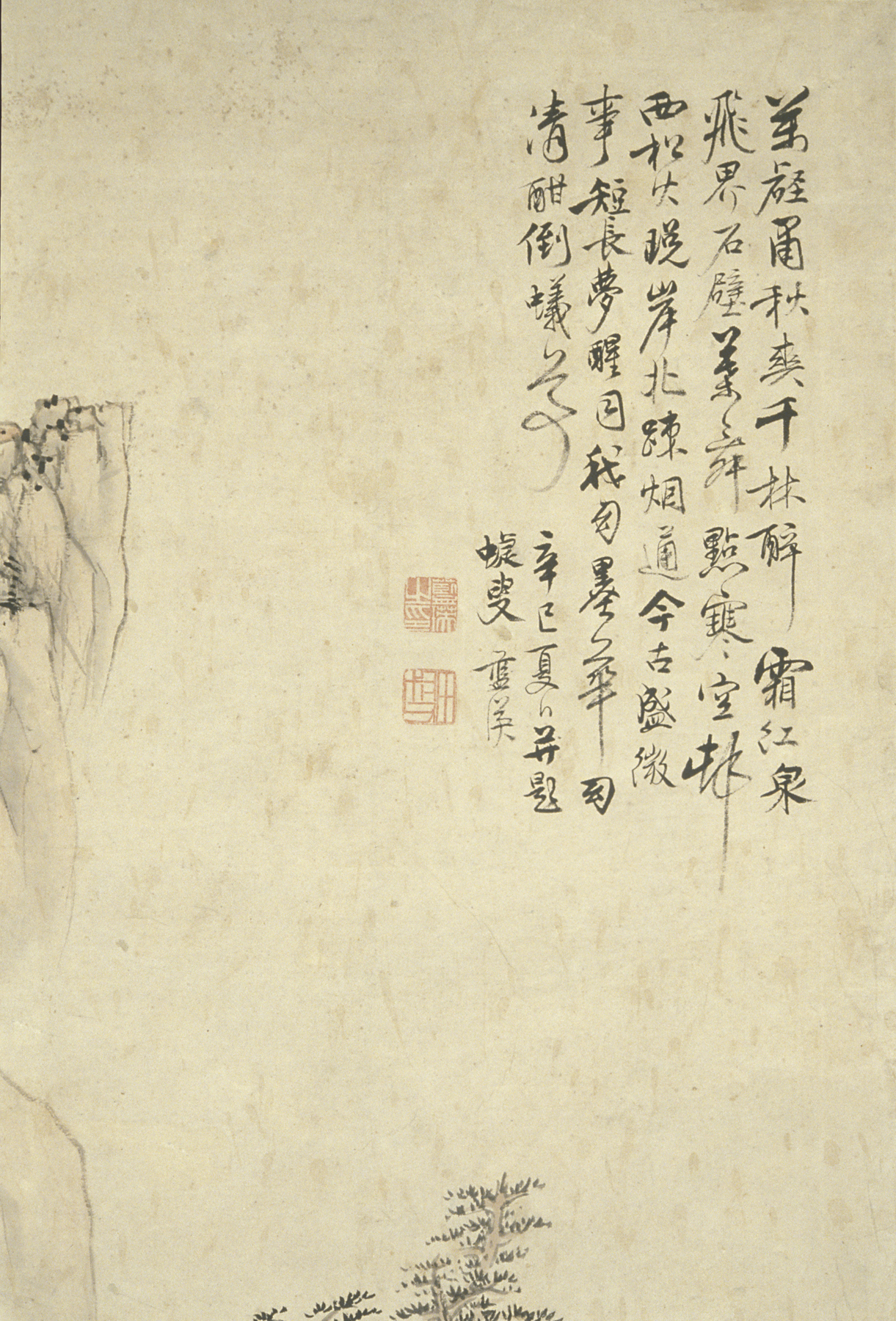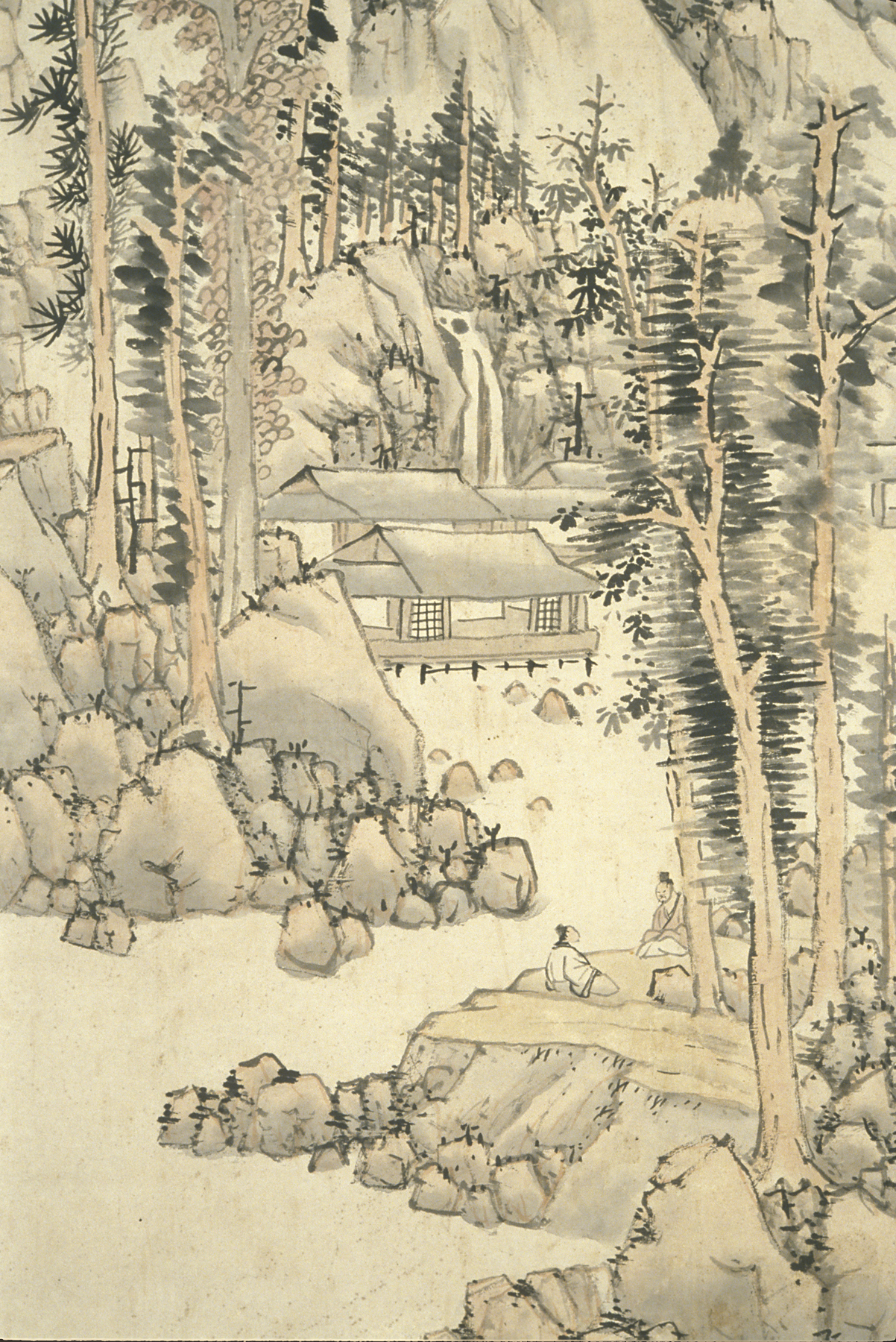Autumn Landscape, Lan Ying
Artwork Overview
Lan Ying, artist
1585–circa 1664
Autumn Landscape,
1641, Ming dynasty (1368–1644)
Where object was made: China
Material/technique: ink; color; paper
Dimensions:
Image Dimensions Height/Width (Height x Width): 207.7 x 100.4 cm
Image Dimensions Height/Width (Height x Width): 81 3/4 x 39 1/2 in
Mount Dimensions (Height x Width x Depth): 329 x 123.2 cm
Mount Dimensions (Height x Width x Depth): 129 1/2 x 48 1/2 in
Roller Dimensions (Width x Diameter): 52 1/2 x 2 in
Image Dimensions Height/Width (Height x Width): 207.7 x 100.4 cm
Image Dimensions Height/Width (Height x Width): 81 3/4 x 39 1/2 in
Mount Dimensions (Height x Width x Depth): 329 x 123.2 cm
Mount Dimensions (Height x Width x Depth): 129 1/2 x 48 1/2 in
Roller Dimensions (Width x Diameter): 52 1/2 x 2 in
Credit line: Museum purchase: State funds, Barbara Benton Wescoe Fund, Helen Foresman Spencer Art Acquisition Fund
Accession number: 1986.0083
Not on display
If you wish to reproduce this image, please submit an image request






